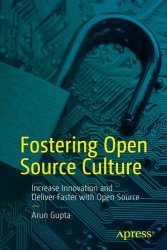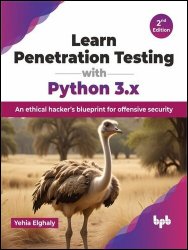 Название: Artificial Intelligence and Cybersecurity: Theory and Applications
Название: Artificial Intelligence and Cybersecurity: Theory and ApplicationsАвтор: Tuomo Sipola, Tero Kokkonen
Издательство: Springer
Год: 2023
Страниц: 300
Язык: английский
Формат: pdf (true), epub
Размер: 17.9 MB
This book discusses Artificial Intelligence (AI) and cybersecurity from multiple points of view. The diverse chapters reveal modern trends and challenges related to the use of Artificial Intelligence when considering privacy, cyber-attacks and defense as well as applications from malware detection to radio signal intelligence.
The chapters are contributed by an international team of renown researchers and professionals in the field of AI and cybersecurity. During the last few decades the rise of modern AI solutions that surpass humans in specific tasks has occurred. Moreover, these new technologies provide new methods of automating cybersecurity tasks. In addition to the privacy, ethics and cybersecurity concerns, the readers learn several new cutting edge applications of AI technologies.
The rapid development of technology is evident in our everyday lives. However, underneath it all lies the concern about cybersecurity. We have also witnessed the rise of artificial intelligence (AI) applications that surpass human intellect in specific tasks. The interplay of AI and cybersecurity is becoming increasingly relevant, as AI needs to be assessed from the cybersecurity point of view, and correspondingly, cybersecurity can benefit immensely from the advances in AI. This path will hopefully lead to less human work and more automated detection and classification in the world of cybersecurity.
The discussion of applications is intended to give an overview of what kind of cybersecurity solutions utilizing Artificial Intelligence exist, and what they can offer in problem solving. We present 10 AI -based cybersecurity solutions covering various areas of cybersecurity. Solutions presented in this study were gathered when conducting the previous research paper: “Artificial Intelligence in the Cyber Security Environment”, re-examined and researched further. A classification principle used in this study can be understood as taxonomy. It describes the most crucial areas of cybersecurity discussed in this study.
Researchers working in AI and cybersecurity as well as advanced level students studying Computer Science and electrical engineering with a focus on AI and Cybersecurity will find this book useful as a reference. Professionals working within these related fields will also want to purchase this book as a reference.
Contents:
Part I. Cybersecurity Concerns
Use of Artificial Intelligence in a Cybersecurity Environment
A Review of Cyber Threat (Artificial) Intelligence in Security Management
Model Based Resilience Engineering for Design and Assessment of Mission Critical Systems Containing Artificial Intelligence Components
Automation of Cybersecurity Work
Artificial Intelligence for Cybersecurity Education and Training
Offensive Machine Learning Methods and the Cyber Kill Chain
Defensive Machine Learning Methods and the Cyber Defence Chain
Part II. Privacy and Ethics
Differential Privacy: An Umbrella Review
AI in Cyber Operations: Ethical and Legal Considerations for End-Users
Part III. Applications
Android Malware Detection Using Deep Learning
Artificial Intelligence Enabled Radio Signal Intelligence
Deep Learning Quantile Regression for Robustness, Confidence and Planning
Model Fooling Threats Against Medical Imaging
Скачать Artificial Intelligence and Cybersecurity: Theory and Applications
[related-news] [/related-news]
Комментарии 0
Комментариев пока нет. Стань первым!















